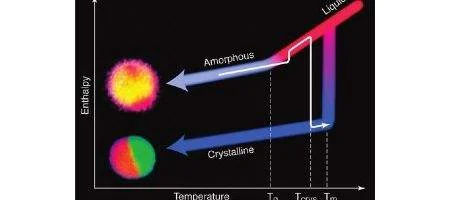An entire new class of phase-change materials suitable for flash memory has been discovered by researchers with the Lawrence Berkeley National Laboratory and the University of California Berkeley.

The materials could be applied to phase change random access memory (PCM) technologies and possibly optical data storage as well, they say. Nanocrystal alloys of a metal and semiconductor, they’ve been dubbed ‘Beans’, for binary eutectic-alloy nanostructures.
“Phase changes in Beans, switching them from crystalline to amorphous and back to crystalline states, can be induced in a matter of nanoseconds by electrical current, laser light or a combination of both,” says Daryl Chrzan, a physicist with appointments at both institutions.
“Working with germanium tin nanoparticles embedded in silica as our initial Beans, we were able to stabilize both the solid and amorphous phases and could tune the kinetics of switching between the two simply by altering the composition.”
The results show that binary eutectic alloy nanostructures, such as quantum dots and nanowires, can serve as phase change materials, which are widely used as a low-power source of non-volatile or flash memory and data storage.
There’s a lot more work to be done before the new materials can be put to practical use.
Chrzan and his colleagues are investigating whether Beans can stand up to repeated phase-changes, and whether the switching back and forth between the two states can be incorporated into a wire geometry. They also want to model the flow of energy in the system to try and tailor the light/current pulses to optimize its phase-change properties.






